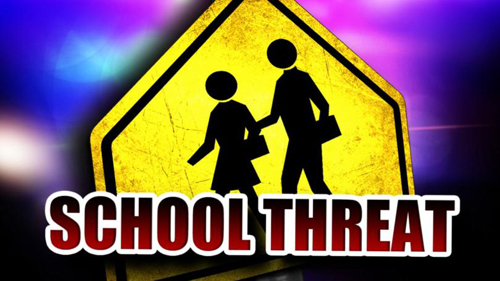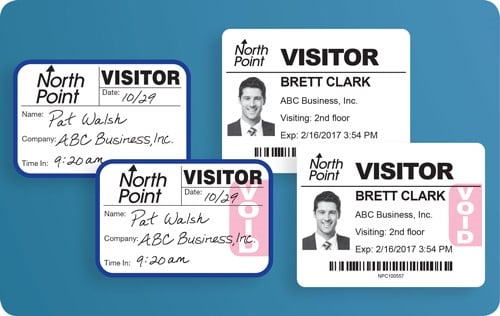Blog
Identifying potential student security threats & what schools can do
by Paul Kazlauskas

Keeping a K-12 school secure is a very difficult job. There are so many aspects to keep track of ranging from developing security procedures for a myriad of possible situations (such as threats from the student body and the outside world), access control, visitor management, and security equipment decisions. Administrators can do their due diligence on these items, but mustn’t forget to be plugged into the population of students as well. The students can be an invaluable resource for noticing potential threats within the student body (such as a mentally unstable student).
While it is known that only a school psychologist or mental health practitioner can truly determine and/or identify if a particular student is a potential threat, it is important to develop personality “red flag” guidelines so that other people know what to report. If they see something, it should be encouraged to say something. Here are a few of the outward indicators of student behavior which might be reported by a teacher, student, parent, or other concerned individual. Noticing a student displaying a few items on the list would warrant mentioning something to school administrators. The list below was developed by the National School Safety Center.
Student behavior worth reporting to school administrators
- Has a history of tantrums and uncontrollable angry outbursts
- Characteristically resorts to name calling, cursing or abusive language
- Makes violent threats when angry
- Has previously brought a weapon to school
- Has a background of serious disciplinary problems at school and in the community
- Has a background of drug, alcohol or other substance abuse or dependency
- Is on the fringe of his/her peer group with few or no close friends
- Is preoccupied with weapons
- Has previously been truant, suspended or expelled from school
- Displays cruelty to animals
- Has little or no supervision and support from parents or a caring adult
- Has witnessed or been a victim of abuse or neglect in the home
- Has been bullied and/or bullies or intimidates peers or younger children
- Tends to blame others for difficulties and problems
- Consistently prefers TV shows, movies or music expressing violent themes
- Prefers reading materials dealing with violent themes
- Reflects anger, frustration and the dark side of life in school essays or writing projects
- Is often depressed and/or has significant mood swings
- Has threatened or attempted suicide
While there’s no way to 100% predict or prevent school shootings/student incidents, experts do agree there are security best practices that schools can adopt to be more aware and prepared when these incidents occur:
- Hire a security director (or at least a dedicated security-minded employee) who will be responsible for creating and implementing emergency response plans. They should also coordinate all security-related activities for the school and be the in-house point-person if any incident occurs.
- Establish a command and control center to mobilize, deploy, and report information regularly to local law enforcement and first responders.
- Designate individuals familiar with the campus to serve as liaisons with arriving emergency response personnel. These individuals should have an intimate knowledge of the school and be prepared to route and communicate with those arriving to help.
- Provide detailed floor plans to emergency personnel beforehand. The most efficient way to do this would involve making them available digitally ahead of time (makes for easy, quick access to that information when an emergency occurs).
- Post evacuation routes in noticeable locations throughout a school and ensure the facility has at least two main evacuation routes. If two main evacuation routes don’t exist yet, create them.
- Create, assemble, and disseminate emergency kits containing radios, floor plans, keys, staff rosters, staff emergency contact numbers, first aid kits, and flashlights.
- Place removable copies of floor plans near entrances and exits for emergency responders.
- Conduct security audits on a regular basis. The audits should include drills for many different scenarios.
Training staff to know and follow standardized procedures in an emergency is paramount. There is no better way to prepare for emergencies that with detailed training and regular follow-ups to that training. A few seconds could mean the difference between life and death, so preparation is critical.
However, the training shouldn’t stop with the staff. Students should be included in training and drills as well. The in-school training conducted should include a final group: local law enforcement and first responders. Local law enforcement and emergency responders may not already be intimately knowledgeable about the school layout and any potential vulnerabilities, so including them will help with response if any incident occurs in the future. When law enforcement, staff, and students are properly trained, the response to any emergency, such as an active shooter situation, can be coordinated and loss minimized as much as possible.
What other protective measures should school administrations take to identify potential school security threats and determine how best to prepare for incidents? Please add your thoughts below in the “Comments” section.
Want the latest, best security practices delivered straight to your inbox? Click the "Subscribe to the Blog" button (on the left side navigation).
Our visitor badges “VOID” overnight to prevent reuse.

See them for yourself — request free samples!
Posted on 9/6/2017



 Paul Kazlauskas
Paul Kazlauskas
 Andrew Jones
Andrew Jones